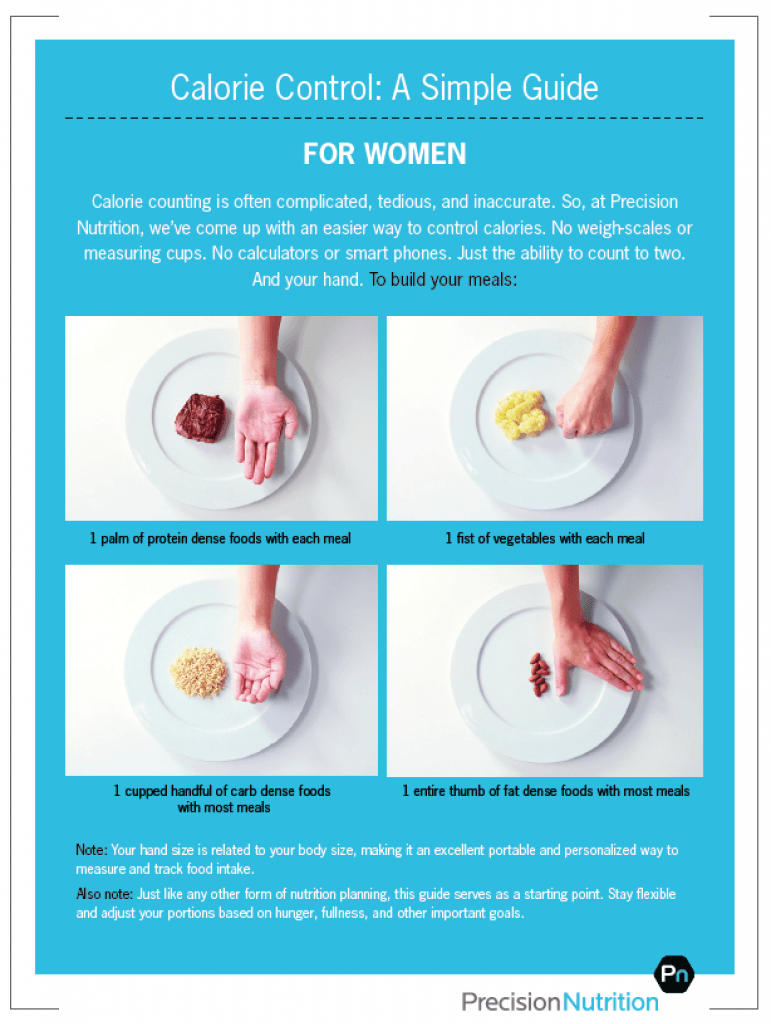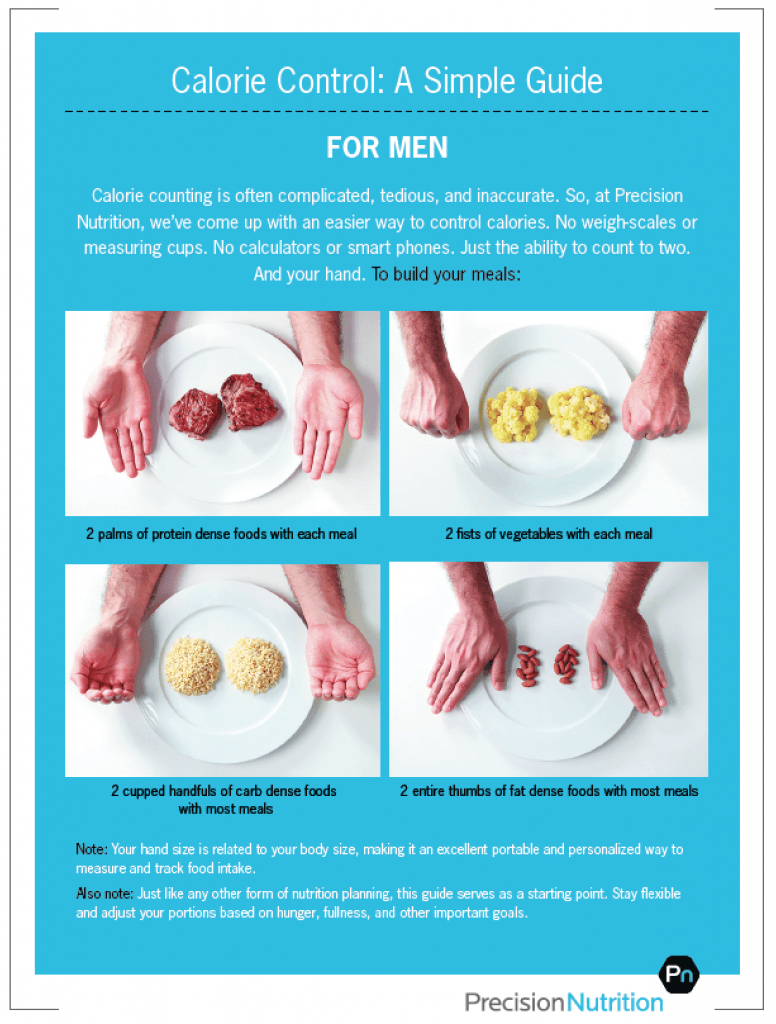The first rule of eating is knowing your body.
The second rule of eating is picking a goal and sticking to it for more than a month.
The third rule of eating is tossing out most of what you think you know about dieting because it might be the reason you’re currently stuck in a plateau.
Macros are not for everyone. Yes, counting works, but sometimes the number crunching does more harm than good from a practical standpoint.
While rule #3 has plenty of exceptions, it’s usually necessary for even the savviest of dieters and fitness pros. Why? Because what we know oftentimes makes it harder for us to accept new information or to question what we already assume as fact.
When it comes to building the right diet for you, simply avoiding what didn’t work in the past or blindly following what appears to work now is important (see rule #1), but it has many limitations. The biggest of which is understanding that progressing to a new level of success and noticeable results usually means identifying flaws in your current plan, and understanding why what you’re doing might not be the most efficient way to get the job done.
To help provide more clarity, use this guide as a starting point for any diet plan you create. It will help you understand what you we know about good diet design, as well as what factors might relate to seeing the most results out of your body.
The Macro Question: Does IIFYM Work?
The undeniable aspect of counting your macros (AKA “if it fits your macros” or IIFYM) is that science is on your side. This is a very good thing if you’re looking for a way to finally jumpstart weight loss frustration or a stagnant muscle building plan.
The laws of thermodynamics are very real, so if you receive a good macro plan that understands progressions, how to manipulate the nutrients, and how to factor in types and duration of exercise, then playing by the numbers is a great path to results. If you know what you want to look like or a have a goal weight, use this as your starting point (instead of your current weight). This will allow you to eat towards a goal.
That said, macros are not for everyone. Yes, counting works, but sometimes the number crunching does more harm than good from a practical standpoint. Becoming OCD about how much to eat or worrying about being 5 grams “over” on daily carb intake (which, honestly, is not a big deal) is something that is determined by your personality.
For some people, creating food templates that allow for “serving-size” based eating is a style that takes a macro approach without all the math. This means breaking down your meals into types of foods, and then just filling in the gaps with what you want to eat.

If you’re not going to count all your proteins, carbs, and fats. however, you still might be best served by a 1-week counting and measuring period that will help you learn portion sizes.
If that still feels like too much, start by learning how to measure portion sizes by eyeballing quantities. The images below (via Precision Nutrition) area great start to visualize individual portion sizes.

Either way, if you’re struggling with your diet, the best way to start in the right direction and make progress is by recording your foods.
You see, research in the New England Journal of Medicine has suggested that those on a weight loss diet tend to under-report how much they eat by as much as 47 percent and overestimate how much exercise they perform by 51 percent. You don’t need to be a math major to see how this ends up.
Recording your foods does not have to be a long-term approach; just the opposite, it’s a short term investment that will offer you eating freedom for the long-term. At the same time, it will allow you to be honest with what’s happening in your body and why you might not be seeing the results you want.
Goal-Based Eating: Understanding Macro Meal Plans
Remember rule #2? The one about goal based eating? This is why so many “one-size-fits-all” plans simply don’t work.
On one level you need to know your primary area of focus. While it’s certainly possible to lose fat and gain muscle at the same time (despite what many people might suggest), maximizing your results is about maximizing your focus.
If fat loss is the goal, don’t worry about your biceps becoming bigger.
If muscle gain is what you want, getting the most out of your plan might mean adding a little bit of fat. (But nothing crazy; there’s no need to go on some old-school type of bulking program. In fact, that could lead to more problems.)
After you choose your general goal, then you need to adjust for your own personalized goal. (More on this below.)
As I tell my clients, the goal is to eat for the body you want, not the body you have.
So setting up a clear target will make the process of building your diet easier.
Finally, you’ll want to start with a generalized approach and then adjust as you see how your body adjusts.
Here are a few breakdowns of what a diet might look like, based on goal
Maximizing Fat Loss
The Approach: higher protein, moderate fat, lower carbs
Your Nutrition Plan: 40% protein, 35 % fat, 25% carbs
Recomp (mild muscle gain and progressive fat loss)
The Approach: Building an isoisocaloric (AKA balanced) macronutrient split. Want equal parts muscle gain and fat loss? Then it should come as no surprise that your diet is going to be fairly evenly spread out across all macros.
Your Nutrition Plan: 33.3% protein, 33.3% fat, 33.3% carbs
Stubborn Mass Gain
The Approach: For the stubborn mass gain, ingesting a lot of calories is key, and oftentimes more protein beyond a certain amount is not as productive as upping the carbs to achieve the extra food.
Your Nutrition Plan: 30% protein, 40% carbs, 30% fat.
Understanding Diet Design: Is This for You?
The guidelines above are for people who spend anywhere between 4 to 7 hours of training each week. This includes all types of activity, such as weight training, recreational cardio, and sports.
These numbers are not designed to meet the calorie needs of endurance and endurance-type athletes who have a high training volume. This type of person needs more carbs.
Why the Diet Design Works
Muscle Gain and Fat Loss
The balanced breakdown of the ensures enough protein for muscle repair, growth, and maintenance. It provides enough fat to support optimal testosterone production. It supplies enough carbs to provide training stamina, as well as synergy with the protein for muscle growth. It does not have the tendency to provide carbs in excess of the individual’s training and physical activity demands; instead it supports lean gains and lean mass maintenance.
Maybe most importantly, it allows for the full range of food groups in order to get not just the proper macronutrients, but also a good range of micronutrients. By focusing on macronutrient splits (instead of just focusing on particular foods), it allows you to focus both on foods that are good for you (animal and plant proteins, vegetables, fruits, fibrous starches, dairy) while still enabling you the flexibility to eat foods that you enjoy.
After all, research in the International Journal of Obesity suggests that the diet you can follow for the long term is always the best option for you.
Although alcohol and desserts are not listed, they can be used sparinglly. These foods are a highly individual matter; research shows that 1-2 drinks per day may have health benefits without hindering physique goals.
However, if you don’t already drink, there’s obviously no need to start. As for desserts, either limit your intake to 1-2 large desserts per week, or a very small portion per day, max (try to limit this to 100-200 calories of dessert of you intend to have dessert daily or most of the days per week).
Maximizing Fat Loss
In the scenario of a very low-carb diet with high training volume, there’s domino effect of defensive physiological phenomena that can help fat loss or cause trouble.
For instance, going to low carb as you push intensity can stimulate your hunger hormones at the same time as decreasing the hormones that suppress hunger. This leaves you wanting to eat everything and the kitchen sink, all while experiencing a drop in the hormones that regulate your metabolic rate.
Translation: this is why so many ultra low carb diets combined with high intensity exercise is a fast road to frustration or failure.
It’s not that these changes are significant enough to halt progress altogether, but what they do is prime your body to fight against losing fat and weight. Or more importantly, they set up your body for rapid weight and fat regain once the dieting phase is over. In a nutshell, that explains your typical yo-yo diet.
The best way to minimizing these dietary backlash is to diet as little as possible in the first place; in other words, your caloric deficit should be as little as necessary to achieve the desired rate of loss, and carbohydrates in particular should be set at the highest level possible that will allow the desired rate of fat loss.
Planning Cheat Days
That said, while severe carb restriction combined with training amplifies the body’s natural defenses, sometimes it is necessary to achieve extreme levels of leanness. But these approaches should only be applied once you achieve levels of the super lean. (In general, starting below 8 percent body fat.)
In this case, carbohydrate “refeeds” serve the multi-purpose of replenishing glycogen, and reversing the defensive hormonal and metabolic events that occur with severe restriction.
However, in order for the refeeds to be effective for this purpose, they must be rather massive (picture a carb shoveling fest spanning from a few hours to a few days).
But in the case of the less severe and gradual fat loss diet, a traditional refeed used in cyclical ketogenic (low carb) dieting isn’t necessary or beneficial.
Instead, a single indulgence meal can be employed. The purpose of the hyperfeed is more psychological than anything else, since it isn’t being used for that purpose of reversing the effects of severe prolonged carb restriction.
Unlike traditional low-fat carb-based refeeds, the hyperfeed can be anything on Earth you damn well want to eat, just keep it to a single main dish, plus a dessert if you’re feeling like eating like a king.
Men at 15% body fat or lower (for women, around 20%) can enjoy a hyperfeed once a week by having it in place of a main meals.
If you’re concerned about weight gain, you can either cut out all snacks or cut out an entire meal on the day of a hyperfeed.
Those dieting for a show or a photoshoot (mind you, with enough weeks in the pipeline to not need to diet severely) can get away with a weekly hyperfeed, but it’s a touch riskier. Most folks in this population refuse to take advantage of this meal even when given “permission”, but a hyperfeed every 2 weeks is certainly not gonna impede progress regardless of how much of a banger it is.
The Pink Elephant: Personalization
The worst thing that can happen is for you to read the numbers above and think, “I’m set for life.”
Good nutrition is much more about understanding how to eat healthy and work around your frustration than trying to find a magical formula.
All of those formulas will help you; but most people will receive benefits only up to a certain point. The formulas should serve as a ballpark guide, not a set-in-stone blueprint. Everyone has unique requirements, genetics, and food sensitivities.
Just as important (and often overlooked) is that your current state of body composition (your ratio of muscle-to-fat) will significantly influence how your body responds to what you eat. It’s not fair, but very lean people can “get away” with eating more carbs and treats, whereas those with more weight to lose don’t have as much room to slip up in the amounts that they eat.
Notice, I didn’t say that being heavier means you can’t eat good food. Therein lies the joy of a good diet and a macro based plan: any diet has room for treats and indulgences. So it’s not about restriction, but instead a matter of control and confidence that it doesn’t take being perfect to be healthy.
Rather than committing to staying within the lines, use all diet plans (like the one above) it as an initial template from which to adjust according to your results.
Just make sure you weight long enough. Too many people change diets within a matter of days, when in reality it’s best to measure progress after about 2-4 weeks, and then continually adjust.
Diet Planning 101
Still not sure what to eat? Sign up for a risk-free month of personalized coaching, including assessments that reveal the biggest mistakes with your current plan.
READ MORE:
Big Meals vs. Small Snacks: What’s Best For You?
Winning the War on Hunger: Practical Solutions to Overeating

Adam Bornstein is a New York Times bestselling author and the author of You Can’t Screw This Up. He is the founder of Born Fitness, and the co-founder of Arnold’s Pump Club (with Arnold Schwarzenegger) and Pen Name Consulting. An award-winning writer and editor, Bornstein was previously the Chief Nutrition Officer for Ladder, the Fitness and Nutrition editor for Men’s Health, Editorial Director at LIVESTRONG.com, and a columnist for SHAPE, Men’s Fitness, and Muscle & Fitness. He’s also a nutrition and fitness advisor for LeBron James, Cindy Crawford, Lindsey Vonn, and Arnold Schwarzenegger. According to The Huffington Post, Bornstein is “one of the most inspiring sources in all of health and fitness.” His work has been featured in dozens of publications, including The New York Times, Fast Company, ESPN, and GQ, and he’s appeared on Good Morning America, The Today Show, and E! News.
I amm truly grateful to the holder of this website who has shaded this great
article at at this place.